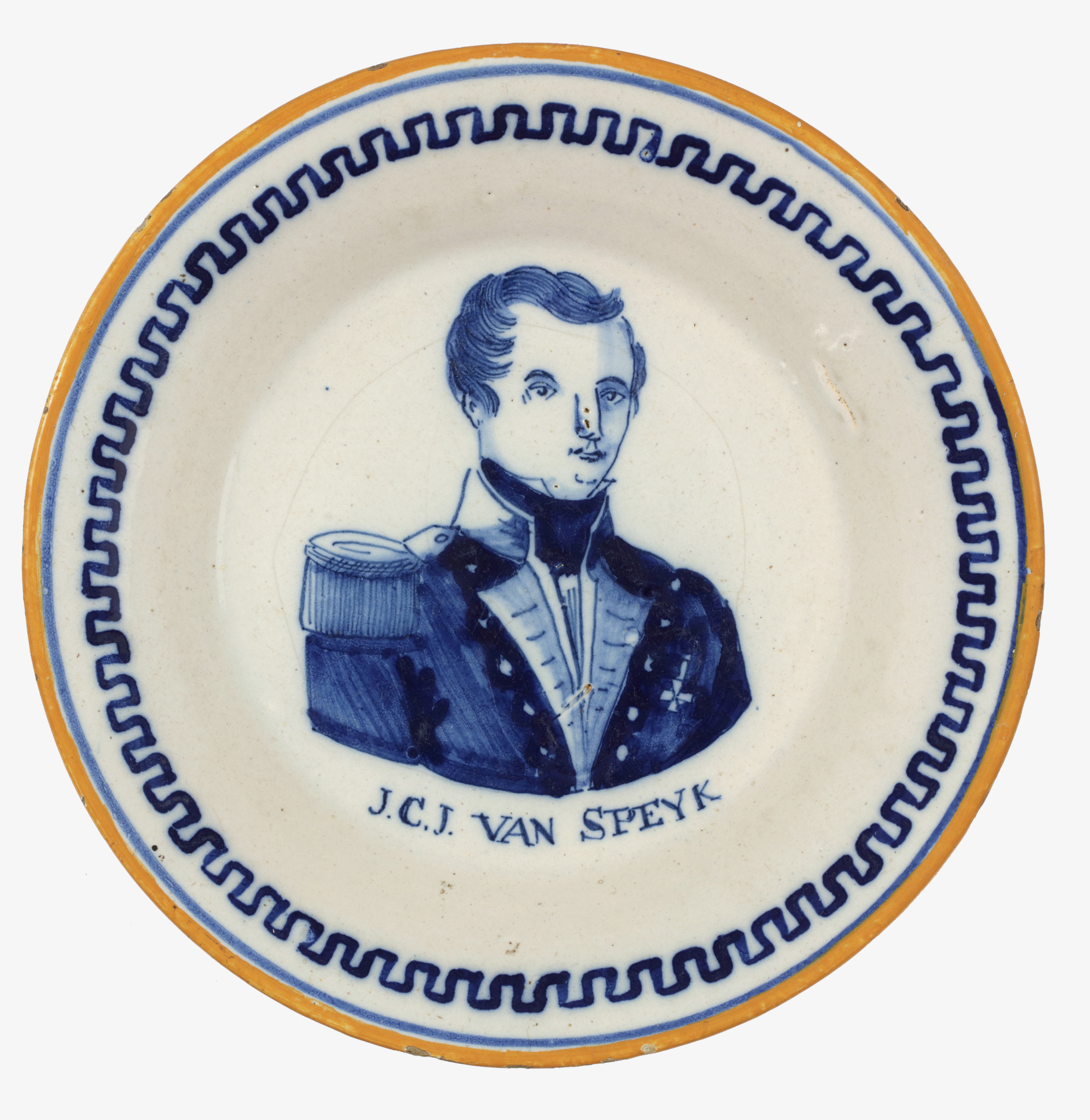![]()
Images on this website are licensed under a
Creative Commons Attribution-NoDerivs 3.0 Unported License.
OBJECT
•D2464. Blue and White Commemorative Plate ‘J.C.J. van Speijk’
Delft, circa 1831
Attributed to De Drie Klokken (The Three Bells) factory
In the center a buste of J.C.J. van Speyk is depicted in blue, adorned in a marine commander’s jacket, with the knight’s cross of the fourth class of the Dutch Military William Order displayed on his left lapel—a testament to his service in the Dutch East Indies, on his right shoulder a single epaulet, the rim of the plate decorated with a meander border below a yellow rim.
DIMENSIONS
Diameter: 22.8 cm. (9 in.)
NOTE
Maritime history has been a popular theme over time. The story of cartographer and explorer Willem Barentsz (1550-1597) and his crew who where stuck on Nova Zembla in the Northern Ice sea (1595-96), skipper and merchant IJsbrant Willemsz. Bontekoe (1587-1657) and the adventures of Admiral Michiel de Ruyter (1607-1676) are all fascinating histories becoming enduring bestsellers. Such is the narrative of J.C.J. van Speyk (1802-1831), immortalized on this commemorative plate. Orphaned in his youth, Van Speyk, originally trained to become a tailor, embarked on a seafaring life and gained entry into the Royal Dutch Navy in 1820. Following several years in the East Indies, where he earned the moniker ‘Schrik der roovers,’ (fear of the robbers). Van Speyk assumed the role of commander aboard gunboat N2 during the Belgian uprising. Assigned the responsibility of inspecting ships traveling to and from Antwerp, a city that had joined the uprising in October 1830, Van Speyk encountered a fateful event on February 5, 1831. While sailing to Oosterweel to inspect shipments, his ship drifted on the Scheldt near Fort Sint Laurentius, owing to a robust northwest wind and a malfunctioning anchor. Positioned near an agitated crowd of Antwerp workers and soldiers, some allegedly attempted to seize the ship’s flag.
In response, Van Speijk retreated to the cabin, ostensibly to retrieve official documents. It was there that, by placing his cigar in a barrel of gunpowder, he ignited the ship, uttering what are now considered his historic last words: “…and become an infamous Brabander? Then I’d rather take to the air.” While the authenticity of these words is not verifiable, they have nonetheless become widely renowned. Of his 31 crew members, 28 perished alongside him. His final resting place became the Nieuwe Kerk, the coronation church of the Dutch royal family. In a decree dated February 11, 1833, it was mandated that at least one ship in the Dutch navy must forever bear the name Van Speijk. Since then, seven ships have honored this decree.
SIMILAR EXAMPLES
The collection of the Openluchtmuseum in Arnhem holds a similar commemorative plate with inv. no. NOM.51585-81. Another similar plate is housed in the Maritime Museum in Den Helder with inv. no. K/008/074. A plate with a slightly larger diameter, marked for De Drie Klokken depicting a portrait of general Chassé with a similar meander border is in the collection of the Openluchtmuseum of Arnhem, inv. no. NOM 51584-81 and depicted in Lahaussois 2008. The similarities between the two portrait plates make it likely that the Van Speyk plate has been produced at the Drie Klokken as well.









